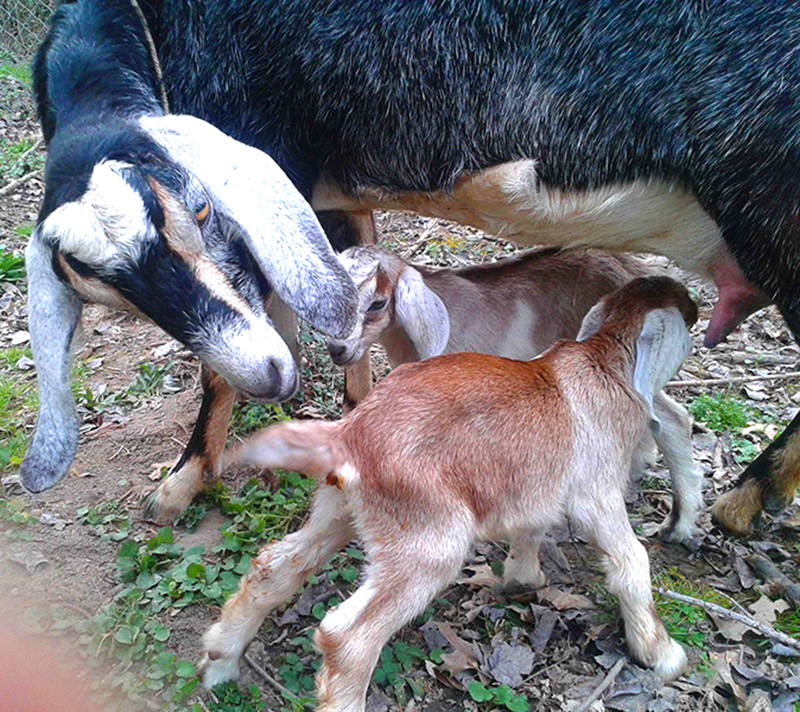
To get milk, you must have kids. This is a truism, no matter what kind of mammal you are. Therefore, the conventional method of managing milk goats is to breed them each fall, milk them for about 10 months then dry them off two months before kidding. Finishing the process of building healthy kids takes too much energy for milking, too. Besides, you want that all-important colostrum when the kids are first born.
Most people who aim to keep their family in milk, cheese, yogurt, ice cream and butter year-round have two goats. They offset their breeding by two months so that one produces while the other goes through the final stages of gestation. Personally, I don’t like to schedule kidding season during winter, so I bred in October and December for kidding in March and May.
This systems has two main advantages: You get extra income from kids each spring, and you can work to improve your herd—and even your breed. This works best if you have purebred animals with good bloodlines, you keep good records and you commit to culling less desirable animals. You also have the advantage of meat, if that a goal. (And of course, there’s general cuteness to consider.)
When I first heard about “milking through,” the practice of milking a doe for two years and breeding her only every other year, I immediately went to that system. That way, I bred only one goat each year and kept the other milking. This saw significantly less wear and tear on the goats (as well as the keeper). It also brought in less income, but in those days I didn’t sell kids for much anyway. I found that production was about the same, going through a winter drop and increasing again in the spring, just as if the goat had kidded. Flavor was just as delicious as always, and cream production just as high.
I began to wonder what would happen if you went longer. I myself nursed my human kids for three years and have known an Indonesian mother who continued for five years. As long as the mother has good food and plenty of water, it seems, she will continue to produce as long as there is demand.
So I was immediately intrigued last year when I saw a post on Facebook from a goat keeper who said her doe was in her fourth year since breeding and producing more milk each year. I asked how long this could continue, and I got a slew of replies from people who milked for multiple years. The winner in that particular thread was a woman who said she bred her doe when she first bought her and had never bred her again. She was now on seven years and going strong.

Kidding is usually easy for healthy goats, but it’s still a high-stress event. And things do happen. In my first 22 years of goat keeping, I’d lost only a couple of kids (even though I’d had triplets and quadruplets). Yet in the two years before I saw this post, I’d lost four out of eight. I was ready to try something simpler.
What’s more, I have known too many goat keepers who can’t bring themselves to sell kids and end up overrun with goats. This is bad for the goats, the humans, the environment and the goat industry. If you don’t use the meat and you aren’t working to build up your breed to win prizes at shows and so on, consider breeding less often—or not at all, after the obligatory first time.
As for myself, I’m still in the experimental stage. Each of my two does has been milking through for two years, which they would have been in any case. I’ll keep you posted how it goes from there.




